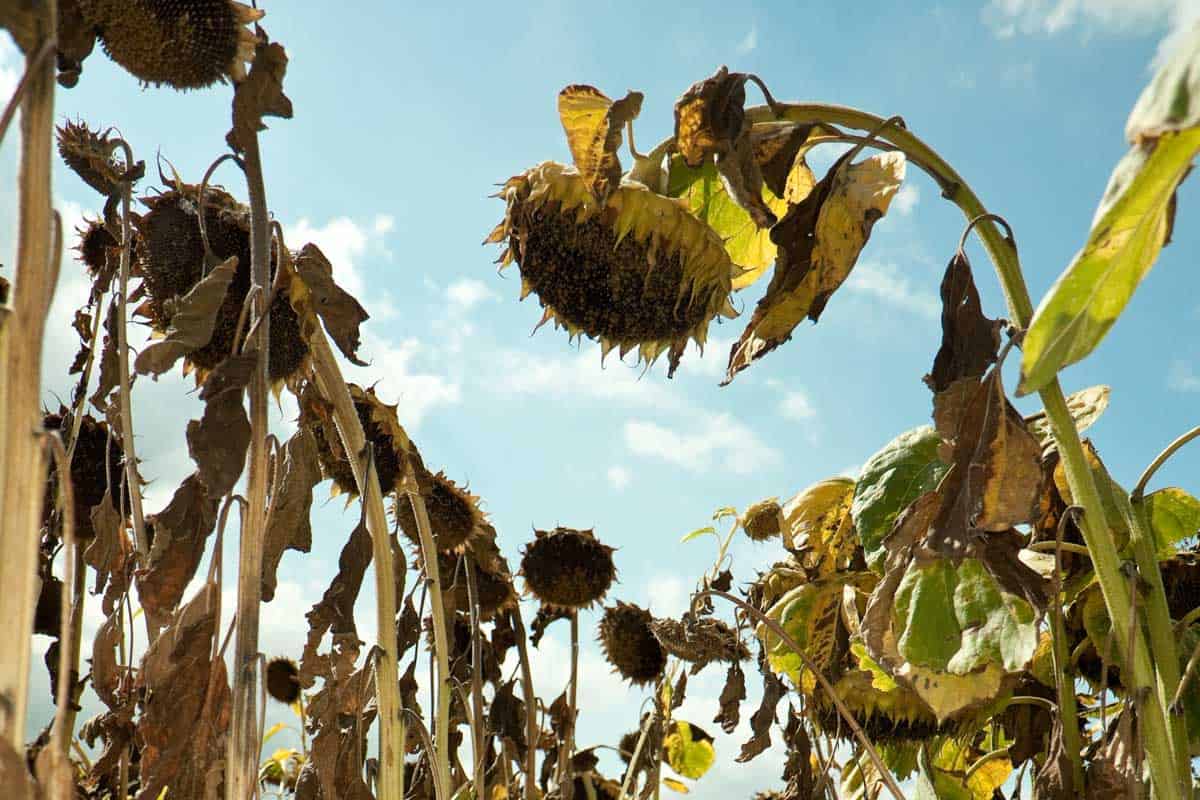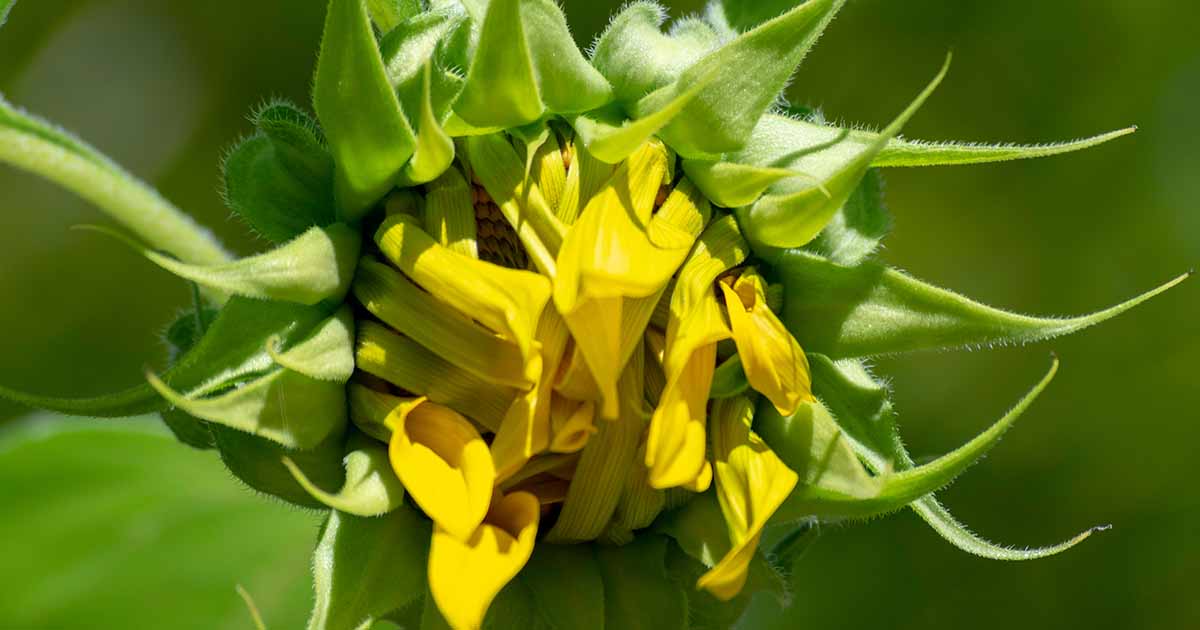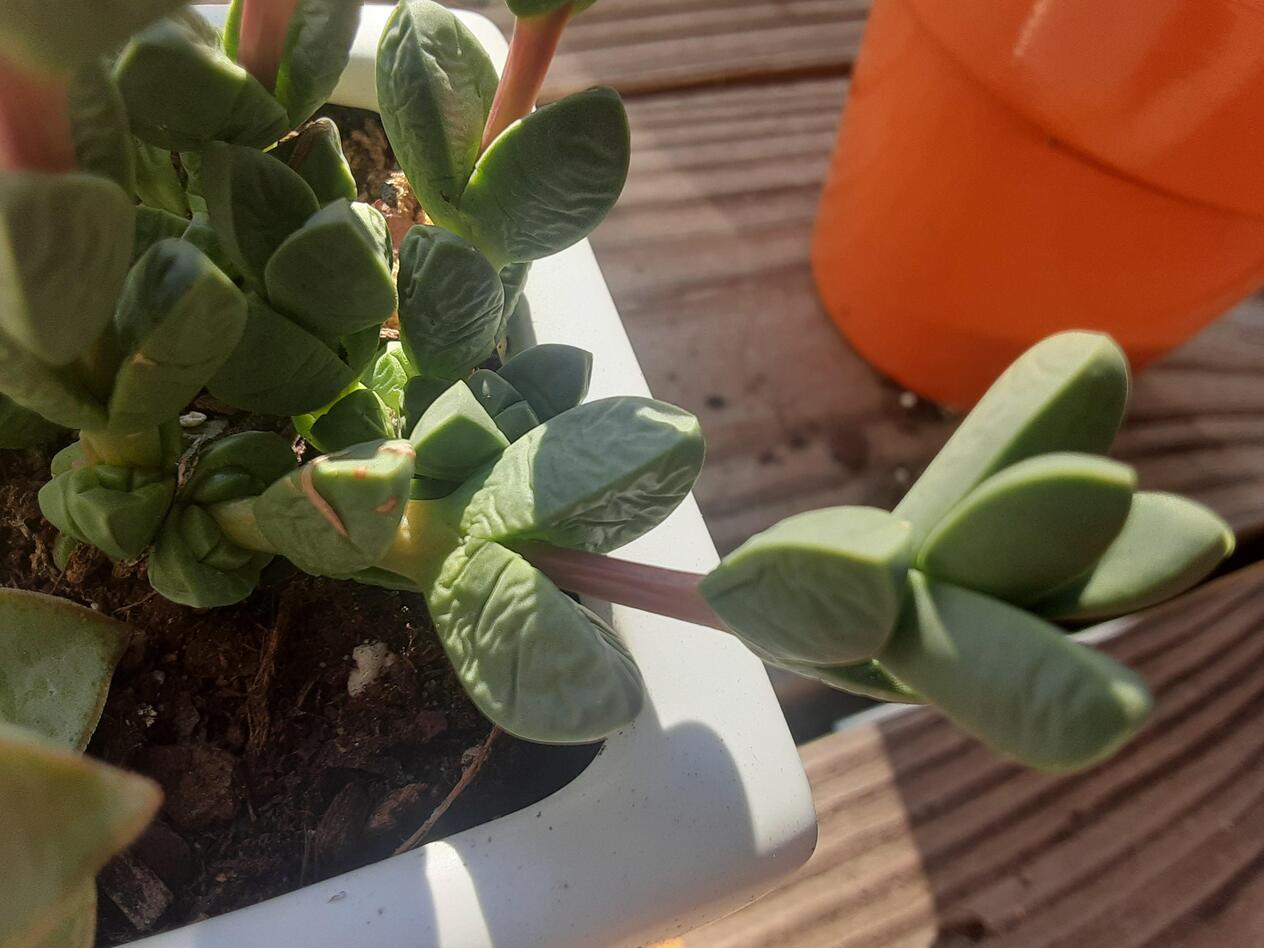Home>Types of Gardening>Ornamental Gardening>Why Is My Ficus Bonsai Dropping Leaves


Ornamental Gardening
Why Is My Ficus Bonsai Dropping Leaves
Published: January 15, 2024
Discover the reasons why your ficus bonsai may be dropping leaves and learn how to care for it to maintain its ornamental beauty. Get expert tips on ornamental gardening.
(Many of the links in this article redirect to a specific reviewed product. Your purchase of these products through affiliate links helps to generate commission for Chicagolandgardening.com, at no extra cost. Learn more)
Table of Contents
Introduction
Welcome to the fascinating world of ornamental gardening, where the art of bonsai cultivation intertwines with the elegance of Ficus trees. Ficus bonsai, with its captivating allure and intricate growth patterns, has captured the hearts of gardening enthusiasts for centuries. However, maintaining the health and vitality of these miniature masterpieces requires a deep understanding of their unique needs and characteristics.
In this comprehensive guide, we will delve into the intricacies of Ficus bonsai care, focusing on a common concern among cultivators: leaf dropping. By unraveling the various factors that contribute to this phenomenon, we aim to equip you with the knowledge and insights needed to nurture your Ficus bonsai back to its full splendor.
From environmental influences to watering practices, fertilization, pest management, and the art of pruning, each aspect plays a crucial role in the overall well-being of your Ficus bonsai. By exploring these elements in detail, we will unravel the mystery behind leaf dropping and empower you to provide the optimal care for your cherished bonsai companion.
So, let's embark on this enlightening journey and discover the secrets of Ficus bonsai care, unraveling the mysteries of leaf dropping and cultivating a deeper appreciation for these captivating miniature trees.
Understanding Ficus Bonsai
Before delving into the specific reasons behind leaf dropping, it’s essential to grasp the fundamental nature of Ficus bonsai. These miniature marvels are derived from the Ficus genus, encompassing a diverse array of trees and shrubs known for their resilience and adaptability. Ficus bonsai, in particular, are revered for their intricate aerial root systems, glossy foliage, and the ability to thrive both indoors and outdoors.
One of the most captivating aspects of Ficus bonsai is their responsiveness to environmental cues, often manifesting their well-being through the graceful dance of new growth and, at times, the enigmatic ritual of leaf shedding. Understanding the natural growth patterns and seasonal rhythms of Ficus bonsai is crucial in deciphering the underlying causes of leaf dropping.
These miniature trees, when cultivated with care and attentiveness, can endure for decades, becoming cherished heirlooms that bear witness to the passage of time. Their adaptability to various styling techniques, including the iconic “weeping fig” form and the classic informal upright style, further accentuates their allure and versatility.
By comprehending the innate characteristics and growth tendencies of Ficus bonsai, cultivators can establish a profound connection with these living works of art, nurturing them in a manner that honors their unique essence. With this foundational knowledge in place, we can now explore the diverse factors that influence the leaf dropping phenomenon, unraveling the intricacies of Ficus bonsai care and cultivation.
Environmental Factors
The environment in which a Ficus bonsai is situated plays a pivotal role in its overall well-being, directly impacting its growth patterns and physiological processes. When seeking to understand leaf dropping, it’s essential to consider the environmental factors that can influence the health of these miniature trees.
Light, as a fundamental environmental element, profoundly influences the vitality of Ficus bonsai. Insufficient light can trigger leaf shedding as the plant reallocates resources to sustain essential growth. Conversely, excessive exposure to direct sunlight, especially during the scorching midday hours, can lead to leaf scorching and subsequent shedding. Striking a balance by providing bright, indirect light is crucial for maintaining the lush foliage of Ficus bonsai.
Temperature fluctuations can also impact the health of Ficus bonsai, particularly when subjected to sudden drops or prolonged exposure to extreme heat. In response to environmental stress, such as abrupt temperature changes, Ficus bonsai may shed leaves as a survival mechanism, redirecting energy to support the remaining foliage and essential physiological functions.
The humidity levels in the surrounding environment can significantly influence the moisture retention capacity of Ficus bonsai. In arid conditions, inadequate humidity can lead to rapid transpiration, causing the bonsai to shed leaves to mitigate water loss. Conversely, excessively high humidity, often coupled with poor air circulation, can create a conducive environment for fungal diseases, which may prompt leaf shedding as the plant combats the underlying pathogens.
By comprehensively assessing and optimizing the environmental conditions in which Ficus bonsai are cultivated, enthusiasts can mitigate the impact of these factors on leaf dropping, fostering an environment that promotes the sustained vibrancy and resilience of these captivating miniature trees.
Watering and Humidity
Watering and humidity management are integral facets of Ficus bonsai care, exerting a profound influence on the plant’s physiological equilibrium and overall vitality. The interplay between these factors and leaf dropping warrants a closer examination to discern their impact on the well-being of these miniature marvels.
Proper watering practices are paramount in preserving the lush foliage of Ficus bonsai. Overly dry conditions can prompt leaf shedding as the plant responds to water stress, reallocating resources to sustain essential growth and metabolic functions. Conversely, excessive moisture, often stemming from overzealous watering, can lead to root suffocation and subsequent leaf yellowing and drop. Striking a harmonious balance by allowing the soil to approach slight dryness between watering sessions is vital in preventing water-related leaf shedding.
Humidity, closely intertwined with watering, profoundly influences the transpirational dynamics of Ficus bonsai. In low-humidity environments, the plant may accelerate transpiration to compensate for the moisture deficit, potentially leading to premature leaf shedding. Conversely, excessively high humidity, often coupled with inadequate air circulation, can create a conducive environment for fungal pathogens, triggering leaf drop as the plant combats the underlying diseases.
Implementing humidity-enhancing measures, such as regular misting or employing a humidity tray, can mitigate the impact of arid environmental conditions on Ficus bonsai, fostering an optimal microclimate that promotes foliage retention. Additionally, adhering to a consistent watering regimen, tailored to the specific moisture requirements of the Ficus bonsai species, is instrumental in safeguarding against water-related leaf shedding.
By conscientiously managing watering practices and optimizing humidity levels, cultivators can mitigate the risk of leaf dropping, nurturing their Ficus bonsai in an environment that fosters sustained foliage lushness and overall well-being.
Fertilization
Fertilization stands as a cornerstone of Ficus bonsai care, wielding a profound influence on the plant’s nutritional status and overall vigor. The strategic application of fertilizers, tailored to the specific needs of Ficus bonsai, is instrumental in sustaining lush foliage and mitigating the risk of leaf dropping.
Essential nutrients, including nitrogen, phosphorus, and potassium, form the bedrock of a comprehensive fertilizer regimen for Ficus bonsai. Nitrogen, crucial for promoting vibrant foliage growth, should be applied judiciously to prevent excessive vegetative expansion, which can strain the plant’s resources and potentially lead to leaf shedding. Phosphorus, vital for fostering robust root development and metabolic processes, serves as a catalyst for sustained foliage vitality. Potassium, with its role in bolstering disease resistance and optimizing physiological functions, further contributes to the overall resilience of Ficus bonsai.
Adhering to a balanced fertilizer schedule, tailored to the specific growth phase and seasonal requirements of Ficus bonsai, is pivotal in sustaining optimal foliage health and mitigating the risk of nutrient-related leaf shedding. During the active growth phase, a nitrogen-rich fertilizer can bolster the development of new foliage, infusing the bonsai with vibrancy and vitality. As the growing season transitions, a balanced fertilizer formulation, encompassing the essential macronutrients and micronutrients, can fortify the plant’s resilience and minimize the risk of nutrient imbalances that may trigger leaf shedding.
Moreover, organic fertilizers, with their gradual nutrient release and soil-enriching properties, offer a sustainable approach to nourishing Ficus bonsai, fostering a balanced and resilient growth trajectory. By integrating organic fertilizers into the overall nutritional regimen, cultivators can cultivate a nutrient-rich soil environment that sustains the lush foliage and overall well-being of their cherished bonsai companions.
By embracing a meticulous and tailored approach to fertilization, enthusiasts can fortify the foliage health of Ficus bonsai, fostering a verdant canopy that endures through the seasons, free from the specter of nutrient-related leaf shedding.
Pests and Diseases
The prevalence of pests and diseases poses a significant threat to the vitality and foliage retention of Ficus bonsai, necessitating vigilant monitoring and proactive management strategies to safeguard these miniature trees from potential infestations and pathogenic assaults.
Common pests, such as spider mites and scale insects, can inflict substantial damage to the foliage of Ficus bonsai, leading to leaf yellowing and eventual shedding. Spider mites, with their diminutive size and prolific reproductive capacity, can rapidly colonize the undersides of leaves, puncturing the plant cells and siphoning vital nutrients, thereby precipitating foliage deterioration. Scale insects, characterized by their protective waxy coverings, can impair the photosynthetic capacity of leaves, instigating a cascade of physiological stress responses that may culminate in leaf shedding. Implementing regular inspections and deploying targeted pest control measures, such as horticultural oils or insecticidal soaps, is crucial in mitigating the impact of these voracious pests on the foliage of Ficus bonsai.
Fungal diseases, including powdery mildew and leaf spot, can also undermine the foliage health of Ficus bonsai, triggering leaf dropping as the plant contends with the underlying pathogens. Powdery mildew, manifesting as a powdery white coating on the leaf surfaces, can impede photosynthesis and nutrient assimilation, prompting leaf shedding as the plant seeks to mitigate the impact of the fungal invasion. Leaf spot diseases, characterized by the formation of necrotic lesions on the foliage, can compromise the structural integrity of leaves, prompting premature shedding as the plant combats the disease-induced lesions. Employing preventive measures, such as optimizing air circulation and adhering to a balanced watering regimen, can mitigate the risk of fungal diseases and their associated impact on leaf retention.
By cultivating a proactive approach to pest and disease management, enthusiasts can fortify the foliage health of Ficus bonsai, nurturing a verdant canopy that flourishes free from the encumbrances of pest infestations and pathogenic incursions.
Pruning and Trimming
Pruning and trimming constitute integral facets of Ficus bonsai care, wielding a transformative influence on the plant’s aesthetic appeal, structural integrity, and overall foliage health. The judicious application of these techniques is instrumental in fostering a vibrant and resilient canopy, mitigating the risk of leaf dropping and promoting the enduring allure of these miniature arboreal marvels.
Structural pruning, aimed at refining the silhouette and enhancing the overall balance of the bonsai, plays a pivotal role in optimizing light penetration and air circulation within the foliage canopy. By selectively removing overcrowded or crossing branches, cultivators can engender an open and well-ventilated growth environment, mitigating the risk of fungal diseases and fostering an optimal microclimate that sustains foliage health. Furthermore, strategic branch pruning can redirect the plant’s resources towards the development of robust foliage, bolstering the overall resilience and vitality of the bonsai.
Foliar trimming, encompassing the selective removal of aged or diseased foliage, is instrumental in sustaining the vigor and aesthetic allure of Ficus bonsai. Aged leaves, exhibiting diminished photosynthetic capacity, can be selectively trimmed to redirect the plant’s energy towards the development of new foliage, fostering a rejuvenated canopy that exudes vitality and grace. Additionally, the prompt removal of diseased or pest-infested foliage mitigates the risk of pathogen spread and nutrient diversion, safeguarding the overall health and foliage retention of the bonsai.
Leaf reduction, a specialized form of trimming, can be employed to optimize the aesthetic refinement and foliage density of Ficus bonsai. By selectively reducing the size of mature leaves through defoliation or targeted leaf pruning, cultivators can engender a more refined and proportionate foliage canopy, accentuating the inherent elegance of these miniature arboreal treasures.
By embracing a meticulous and tailored approach to pruning and trimming, enthusiasts can cultivate a foliage canopy that endures through the seasons, free from the specter of overcrowding, aged foliage, and structural imbalances that may precipitate leaf shedding.
Conclusion
Embarking on the journey of Ficus bonsai cultivation unveils a captivating tapestry of artistry, resilience, and horticultural finesse. As we traverse the nuances of leaf dropping and its multifaceted influences, we gain a deeper appreciation for the intricate interplay of environmental factors, cultural practices, and pest management in sustaining the foliage health of these miniature arboreal marvels.
By comprehensively understanding the environmental cues that shape the growth patterns of Ficus bonsai, enthusiasts can optimize light exposure, temperature regimes, and humidity levels to foster a microclimate that sustains lush foliage and mitigates the risk of leaf shedding. Conscientious watering practices, coupled with humidity management strategies, serve as pillars in fortifying the resilience and vitality of the bonsai canopy, safeguarding against water-related leaf shedding and transpirational stress.
Fertilization emerges as a pivotal element in sustaining the nutritional equilibrium of Ficus bonsai, bolstering foliage health and mitigating the risk of nutrient-related leaf shedding. By embracing a balanced and tailored fertilization regimen, cultivators can cultivate a nutrient-rich soil environment that sustains the enduring vibrancy and resilience of these captivating miniature trees.
Pest and disease management, through vigilant monitoring and proactive intervention, stands as a bulwark against the encumbrances of pest infestations and pathogenic assaults, safeguarding the foliage health and aesthetic allure of Ficus bonsai. Pruning and trimming, with their transformative impact on the structural integrity and aesthetic refinement of the bonsai, play an instrumental role in fostering a vibrant and resilient foliage canopy, free from the specter of overcrowding, aged foliage, and structural imbalances that may precipitate leaf shedding.
As we conclude this insightful exploration, armed with a deeper understanding of the intricacies of Ficus bonsai care, we stand poised to nurture these miniature arboreal treasures with a harmonious blend of artistry, mindfulness, and horticultural acumen. By integrating these insights into our cultivation practices, we can cultivate a foliage canopy that endures through the seasons, exuding vitality, grace, and enduring allure.




